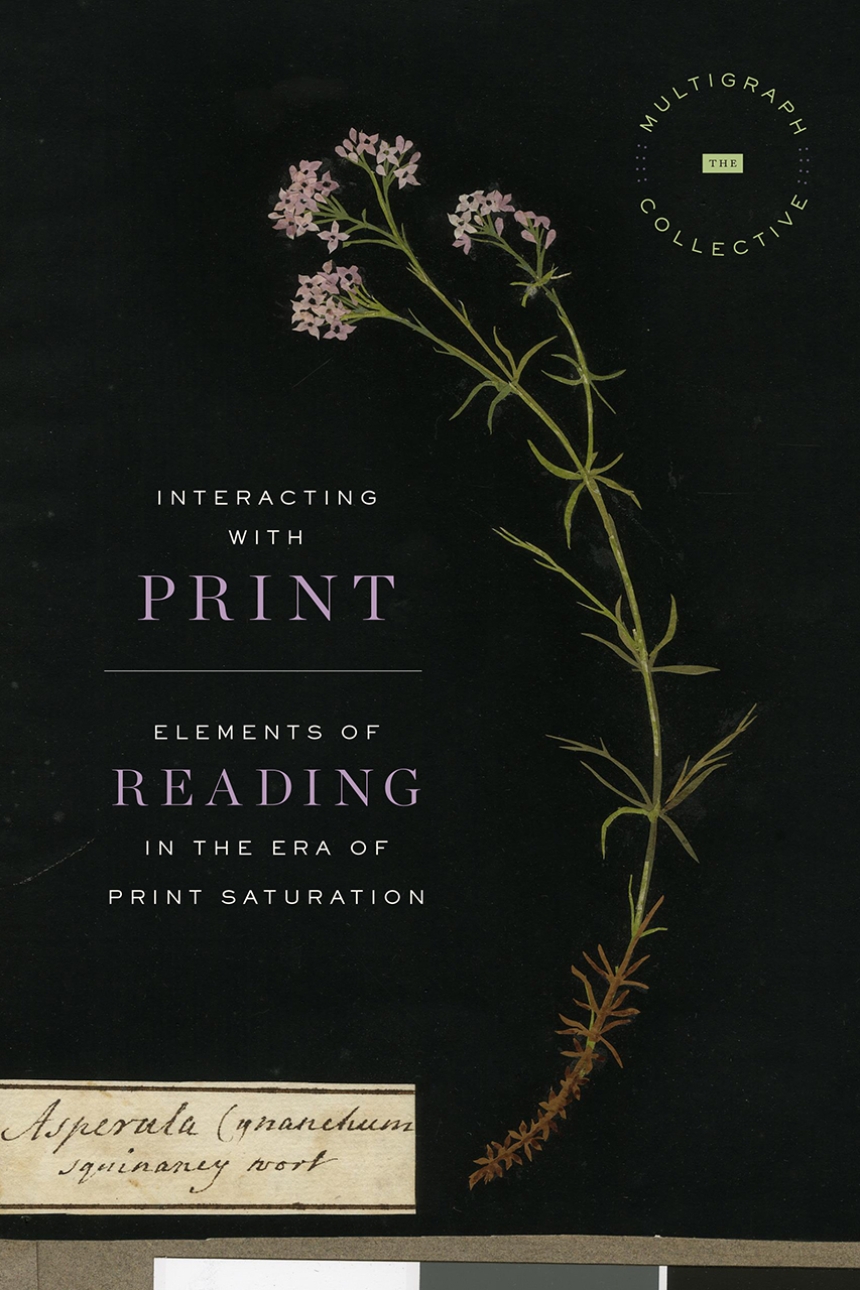Interacting with Print
Elements of Reading in the Era of Print Saturation
9780226469140
9780226469287
Interacting with Print
Elements of Reading in the Era of Print Saturation
A thorough rethinking of a field deserves to take a shape that is in itself new. Interacting with Print delivers on this premise, reworking the history of print through a unique effort in authorial collaboration. The book itself is not a typical monograph—rather, it is a “multigraph,” the collective work of twenty-two scholars who together have assembled an alphabetically arranged tour of key concepts for the study of print culture, from Anthologies and Binding to Publicity and Taste.
Each entry builds on its term in order to resituate print and book history within a broader media ecology throughout the eighteenth and nineteenth centuries. The central theme is interactivity, in three senses: people interacting with print; print interacting with the non-print media that it has long been thought, erroneously, to have displaced; and people interacting with each other through print. The resulting book will introduce new energy to the field of print studies and lead to considerable new avenues of investigation.
Each entry builds on its term in order to resituate print and book history within a broader media ecology throughout the eighteenth and nineteenth centuries. The central theme is interactivity, in three senses: people interacting with print; print interacting with the non-print media that it has long been thought, erroneously, to have displaced; and people interacting with each other through print. The resulting book will introduce new energy to the field of print studies and lead to considerable new avenues of investigation.
416 pages | 16 color plates, 49 halftones | 5 1/2 x 8 1/2 | © 2018
Art: Art--General Studies
History: History of Ideas
Literature and Literary Criticism: General Criticism and Critical Theory
Reviews
Table of Contents
List of Illustrations
Preface; or, What Is a Multigraph?
IntroductionPreface; or, What Is a Multigraph?
1. Advertising
2. Anthologies
3. Binding
4. Catalogs
5. Conversations
6. Disruptions
7. Engraving
8. Ephemerality
9. Frontispieces
10. Index
11. Letters
12. Manuscript
13. Marking
14. Paper
15. Proliferation
16. Spacing
17. Stages
18. Thickening
Epilogue
Works Cited
About the Multigraph Collective
IndexWorks Cited
About the Multigraph Collective
